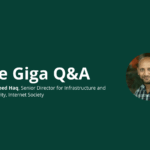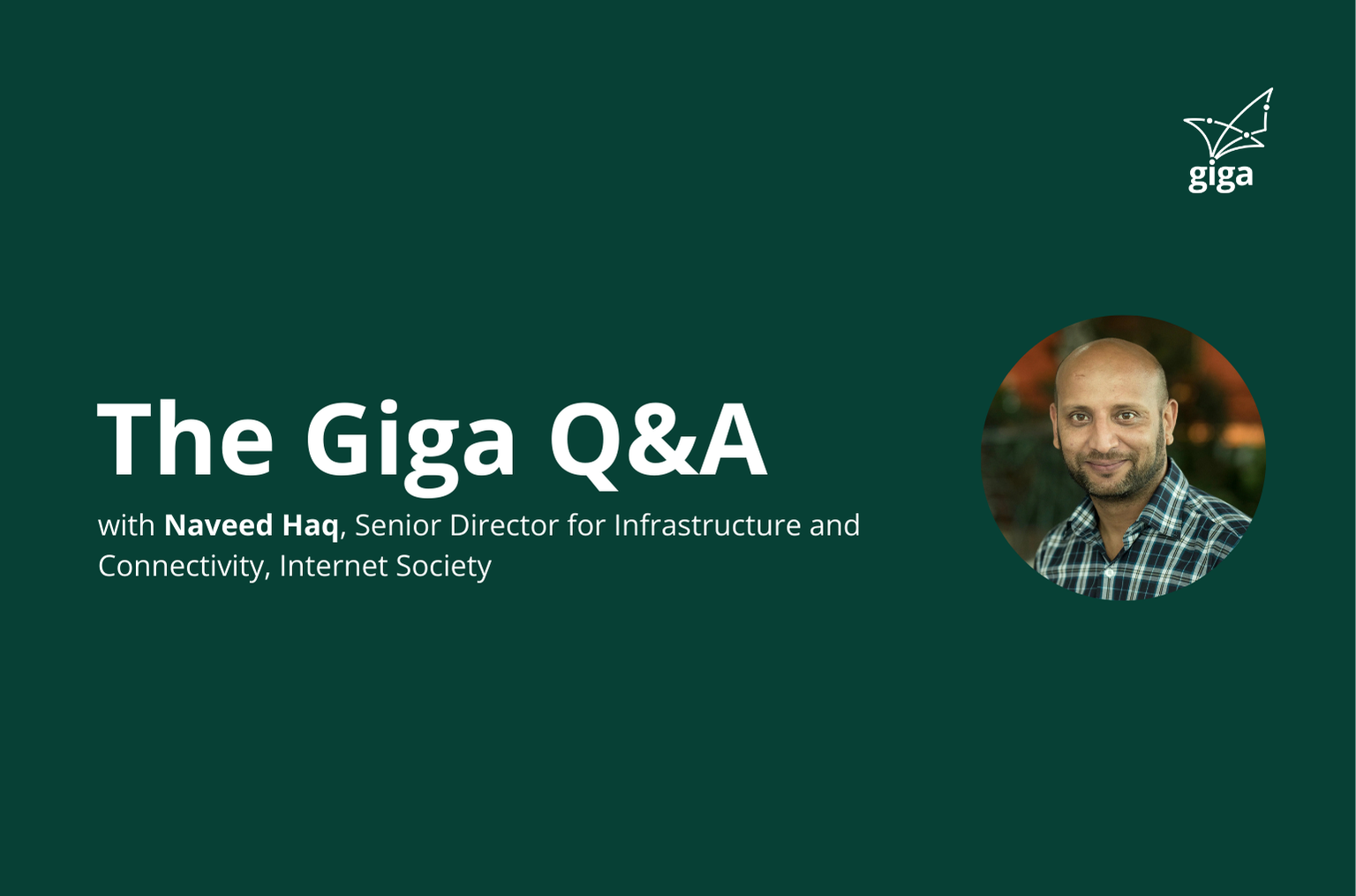In this Giga Q&A, we chat with Naveed Haq, Senior Director at the Internet Society, about what it takes to bring internet to the world’s hardest-to-reach places. He is focused on bridging the connectivity gap, particularly for unconnected and underserved communities in the Asia Pacific region. His background is in computer science and telecommunications, including regulatory work in his native Pakistan.
1. As you know, a third of humanity, or roughly 2.6 billion people, still lacks Internet access. How does the Internet Society address this gap?
It’s an alarming thought, given that the internet has been around for over 30 years. Access remains an economic issue because internet infrastructure is often driven by commercial interests. Telecom companies invest in areas where they can expect a return, which excludes many remote and rural areas with low population density and limited resources. That brings us back to what we do, because organizations like Internet Society develop solutions that empower remote and rural communities with internet access—often through networks they can manage themselves. For over a decade, we’ve been implementing what we call community networks, or community-centered connectivity solutions.
2. How did the Internet Society begin and how has it evolved?
Our journey with community networks we started in 2012 in India, in a remote village in Rajasthan. The idea was, why not use Wi-Fi for connectivity? It’s unlicensed spectrum, so no special permissions were needed. The network layout for this project was first sketched out on a tissue paper—just a rough drawing of a point-to-point connectivity link! Based on our success in India, we launched the Wireless for Communities (W4C) program, which has since connected over 300 villages. Over the years, our work expanded to Nepal, Pakistan, and other regions in the Asia-Pacific and then, starting in 2018, on a global scale.
In the past four years, we’ve connected around 85 locations worldwide, investing around $3.1 million, with significant support from partners like Truist Bank in North America. Today, our program has evolved into a grant-based model through the Internet Society Foundation, where we invite communities to apply for funding to deploy connectivity solutions tailored to their needs. We’re proud that many communities we’ve supported have grown into local connectivity providers. Some have even become cooperatives or small businesses, bringing internet access to their own villages. It’s been 12 years of progress, but we still have a long journey ahead to connect the remaining 2.6 billion people globally.
3. What is one of the most challenging locations you’ve worked to connect?
One was establishing a community network near Mount Everest, about 10.3 kilometers from the base camp. In 2022, the Sherpa community in Kunde and Kumjung, located at 4,000 meters above sea level, reached out to us with pressing connectivity challenges. Despite the availability of 3G coverage, residents often had to climb an additional 100 to 200 meters in elevation just to access a signal. To communicate with anyone in Kathmandu or beyond, they faced an hour’s journey merely to send a WhatsApp message. Their community included a school and a hospital, yet reliable internet was out of reach. After mobilizing the community and securing wireless connectivity, we prioritized connecting the school. I’ll never forget the excitement on the students’ faces as they searched for their school online for the very first time. About a year later, we started hearing from the Sherpa community that the school alone wasn’t enough. The school closed at 3:00 PM, leaving the rest of the community without access. With around 1,600 people living in those two villages, it was clear that broader connectivity was needed. With support from donors, we secured the funding to deploy a fiber optic network. This network is among the highest in the world. Currently, we have 140 homes and lodges connected through fiber optic connectivity. While we’re not providing it for free, the rates are heavily subsidized and very affordable. Lodge owners, for example, are charging climbers around $4 per day for wi-fi creating a new revenue stream for them. This access has been transformative for the community. You can learn more about this project here.
4. At Giga we’re focused on connecting schools, while the Internet Society looks more broadly at communities. Do you see opportunities for collaboration between our two organizations?
There are many synergies. Beyond the direct connectivity work, we also have technical training programs and mapping projects, areas where we could align our efforts. When we think about partnerships, it’s about creating an entire ecosystem around connectivity. This ecosystem involves the local community, local governments, global organizations like ours, and others. I believe that by supplementing each other’s work, we can create sustainable community-centered connectivity models that empower communities to manage and maintain their own networks.
5. Looking forward, how do you envision the future of internet access for underserved regions?
For the millions still unconnected, traditional networks often don’t reach them, and without coordinated action, we risk leaving a significant portion of the population disconnected even a decade from now, thus keeping the digital divide. Policymakers have a critical role to play in fostering an enabling environment. Imagine a program where small villages—those with populations under 2,000—are supported with initial funding, training, and resources to build their own networks. These communities could run small-scale businesses, charging minimal fees to ensure sustainability while bringing transformative benefits to their families and neighbors. Unfortunately, smaller operators often struggle to compete with large telecom giants. In Pakistan, for example, there were over 140 ISPs in the early 2000s, but now fewer than 20 remain. If regulators had taken a more innovative licensing and spectrum approach to sustain these smaller businesses, fewer people might be unconnected today. Ultimately, if we empower communities—whether indigenous, refugee or remote—to take charge of their own connectivity, with our support, they can build sustainable solutions. No traditional network provider will invest in these areas, but together with local communities, we can make it happen.

